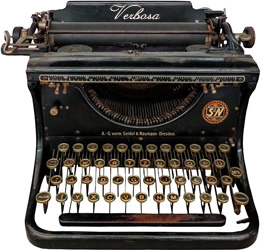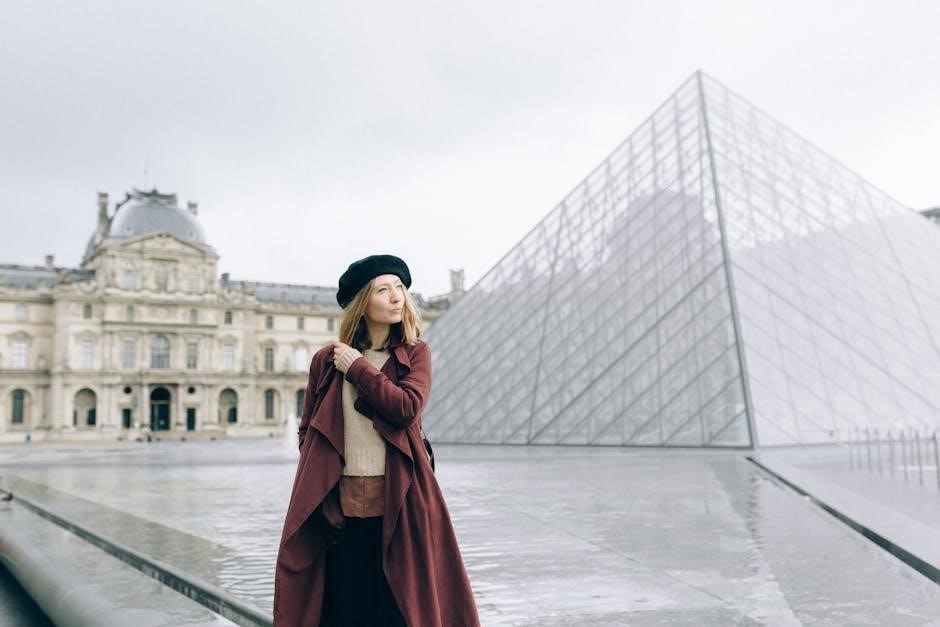Self-guided museum tours offer a personalized and flexible way to explore cultural heritage, combining interactive storytelling, multimedia integration, and effective navigation to create an immersive and engaging experience for visitors.
Interactive Storytelling Elements
Interactive storytelling elements, such as audio narratives and multimedia integration, engage visitors by immersing them in the history and significance of exhibits, creating a memorable and emotional connection.
Definition and Purpose
Self-guided museum tours are independent visitor experiences where individuals explore exhibits without a traditional guide. These tours are designed to provide flexibility, personalization, and cost-effectiveness for museums. By allowing visitors to navigate at their own pace, self-guided tours enhance learning and engagement, offering a tailored experience that aligns with individual interests. They cater to diverse learning styles and preferences, making cultural and historical content more accessible. The purpose of self-guided tours is to empower visitors with autonomy, enabling them to deepen their understanding of artifacts and exhibits through interactive and immersive methods; This approach also reduces staffing costs for museums while increasing visitor capacity. Ultimately, self-guided tours aim to create a meaningful and enriching experience, fostering a deeper appreciation of cultural heritage and promoting lifelong learning.
Methods and Techniques
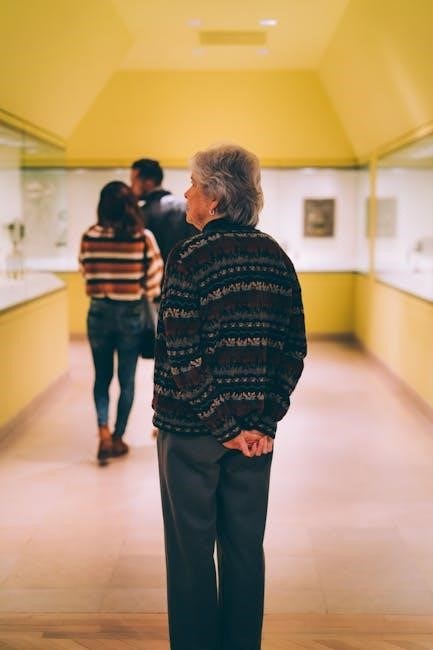
Self-guided museum tours employ a variety of methods and techniques to enhance visitor engagement and provide a seamless experience. One common approach is the use of audio guides, which offer pre-recorded narratives about exhibits, allowing visitors to learn at their own pace. Mobile applications are another key tool, providing interactive maps, exhibit descriptions, and multimedia content. Some museums incorporate QR codes placed near exhibits, which visitors can scan to access additional information or multimedia content. Beacon technology is also utilized to deliver location-specific content, enhancing the visitor’s journey. Additionally, interactive kiosks and digital displays are used to provide wayfinding assistance and exhibit details. These methods are designed to empower visitors with flexibility and control, enabling them to tailor their experience to their interests and preferences. By integrating these techniques, museums create a dynamic and engaging environment that caters to diverse learning styles and enhances overall satisfaction.
Benefits for Visitor Engagement
Self-guided museum tours offer numerous benefits for visitor engagement, fostering a more personalized and immersive experience. By allowing visitors to explore at their own pace, these tours increase satisfaction and encourage deeper interaction with exhibits. Interactive elements, such as audio guides and QR codes, provide visitors with the flexibility to access additional information, enhancing their understanding and enjoyment. This approach also accommodates diverse learning styles, enabling visitors to focus on exhibits that align with their interests. The ability to pause, replay, or skip content empowers visitors, making the experience more enjoyable and tailored to their preferences. Additionally, self-guided tours reduce the need for large groups, creating a more intimate and reflective environment. They also encourage active participation, as visitors can engage with interactive games, quizzes, and multimedia content. Overall, self-guided tours enhance visitor engagement by providing a flexible, personalized, and enriching experience that fosters a deeper connection with cultural and historical artifacts.
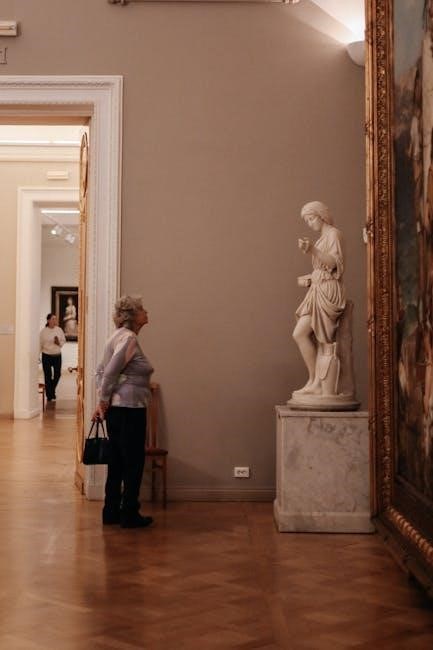
Multimedia Integration
Multimedia integration enhances self-guided tours with audio guides, videos, and interactive games, providing immersive and engaging experiences. It combines visual, auditory, and tactile elements to cater to diverse learning styles and preferences.
Types of Multimedia Used
In self-guided museum tours, various multimedia tools are employed to enhance visitor engagement. Audio guides provide detailed narrations about exhibits, while mobile apps offer interactive maps and additional content. QR codes placed near exhibits link to videos, images, or further information, enriching the experience. Some museums utilize augmented reality (AR) to overlay digital content onto physical displays, creating immersive and interactive experiences. Video commentaries and short documentaries are also used to provide visual context and historical background. Interactive games and quizzes encourage active participation, making learning fun and engaging. Digital displays and touchscreens allow visitors to explore collections in depth, offering high-resolution images and detailed descriptions. These multimedia elements cater to diverse learning styles, ensuring a personalized and enriching experience for all visitors. By integrating these tools, museums create a dynamic and accessible environment that fosters deeper connections with their collections.

Enhancing Visitor Experience
Multimedia integration in self-guided museum tours significantly enhances the visitor experience by creating a more immersive and engaging environment. Interactive storytelling, combined with multimedia elements, allows visitors to connect deeply with exhibits, fostering a sense of personal involvement. Audio guides and mobile apps provide flexibility, enabling visitors to explore at their own pace while accessing detailed information. The use of augmented reality (AR) and virtual overlays brings historical contexts to life, making exhibits more relatable and memorable. Additionally, interactive games and quizzes encourage active participation, transforming learning into an enjoyable and dynamic process. These tools cater to diverse learning styles, ensuring that all visitors can engage with the content in a way that suits them best. By combining education with entertainment, multimedia integration creates a meaningful and memorable experience, leaving visitors with a deeper appreciation of cultural and historical artifacts. This approach ensures that self-guided tours are both informative and enjoyable for all audiences.
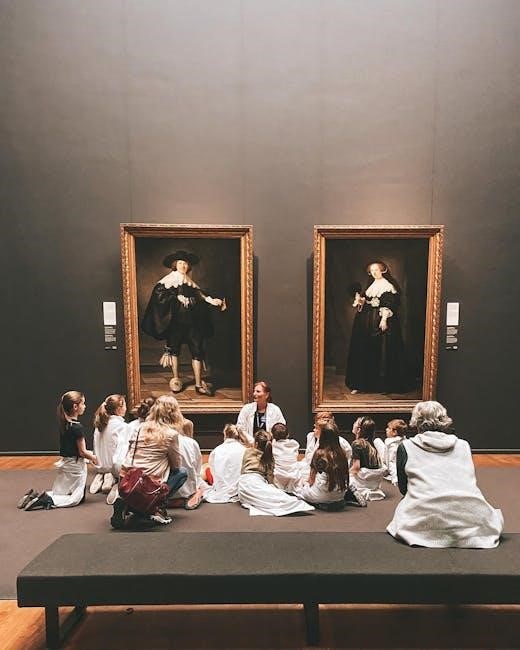
Examples and Case Studies
Several museums have successfully implemented self-guided tour components to enhance visitor experiences. The Louvre, for instance, offers interactive apps that provide detailed narratives and AR features, allowing visitors to explore masterpieces like the Mona Lisa in depth. The British Museum uses audio guides and mobile apps to deliver personalized content, enabling visitors to focus on specific exhibits. Similarly, the Metropolitan Museum of Art employs beacon technology to trigger relevant information as visitors approach artworks, creating a seamless and engaging experience. These case studies highlight how multimedia integration and interactive storytelling can transform self-guided tours into immersive journeys. By leveraging technology, museums like the Natural History Museum in London have also introduced tactile exhibits and audio descriptions, ensuring inclusivity for all visitors. These examples demonstrate how self-guided tours can cater to diverse interests and needs, fostering deeper engagement and a more memorable connection with cultural heritage.
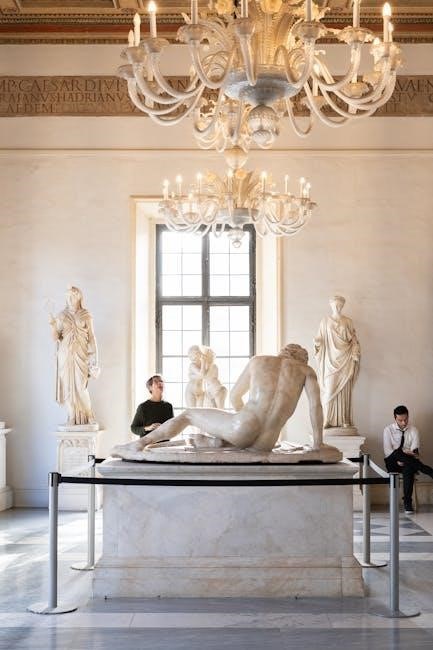
Effective Navigation and Wayfinding
Clear signage, interactive maps, and beacon technology ensure seamless navigation, providing visitors with real-time information and personalized routes to enhance their self-guided museum tour experience.
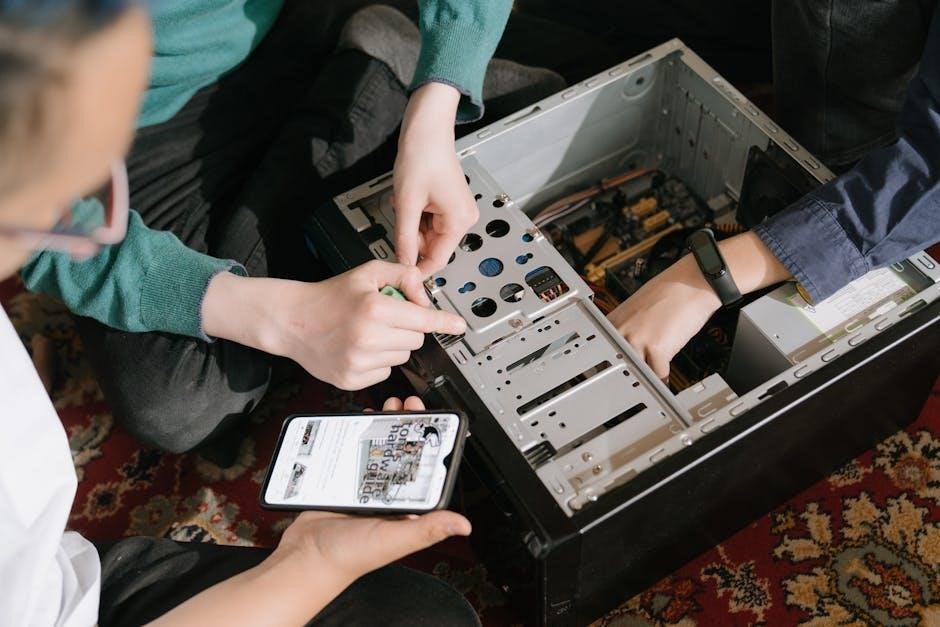
Importance in Museum Tours
Effective navigation and wayfinding are essential for ensuring a seamless and enjoyable self-guided museum tour experience. Clear signage, digital maps, and beacon technology help visitors move effortlessly through the space, reducing confusion and frustration. These tools provide real-time information, enabling visitors to locate exhibits quickly and plan their routes efficiently. Personalized navigation options, such as tailored routes based on interests or time constraints, enhance the overall experience. By minimizing the need to ask for directions, visitors can focus on engaging with the exhibits rather than navigating the layout. This adaptability is particularly beneficial in large museums with extensive collections, ensuring that visitors can explore without feeling overwhelmed. Effective wayfinding also supports accessibility, with features like audio prompts and visual cues catering to diverse needs. Ultimately, intuitive navigation systems empower visitors to take control of their experience, fostering a deeper connection with the museum’s offerings and cultural heritage.
Tools and Technologies
Modern self-guided museum tours rely on a variety of tools and technologies to enhance visitor experiences. Audio guides, mobile apps, and beacon technology are among the most common. Audio guides provide pre-recorded narratives about exhibits, offering insights and context. Mobile apps often include interactive maps, exhibit information, and multimedia content, enabling visitors to navigate and learn at their own pace. Beacon technology uses Bluetooth Low Energy (BLE) to trigger location-specific information, such as videos or audio clips, as visitors approach exhibits. Additionally, QR codes placed near displays allow visitors to access supplementary materials like images, videos, or detailed descriptions. Some museums also incorporate augmented reality (AR) to overlay digital content onto physical exhibits, creating immersive experiences. These tools not only improve accessibility but also cater to diverse learning styles, ensuring a personalized and engaging tour for all visitors. By leveraging these technologies, museums can create dynamic, interactive, and memorable self-guided experiences.
Designing Intuitive Systems
Designing intuitive systems for self-guided museum tours is essential to ensure a seamless and enjoyable visitor experience. Clear signage, both physical and digital, plays a crucial role in guiding visitors through exhibits. Digital tools, such as interactive maps and mobile apps, should be user-friendly, with intuitive interfaces that allow visitors to navigate effortlessly. Accessibility features, like audio descriptions and tactile signage, ensure inclusivity for all visitors. Consistent visual cues, such as color-coded pathways and clear labeling, help visitors move through the museum without confusion. Additionally, incorporating feedback mechanisms, such as surveys or interactive kiosks, allows museums to refine their systems based on visitor experiences. By prioritizing simplicity, clarity, and adaptability, museums can create intuitive systems that enhance exploration and engagement, making self-guided tours more enjoyable and accessible for everyone.
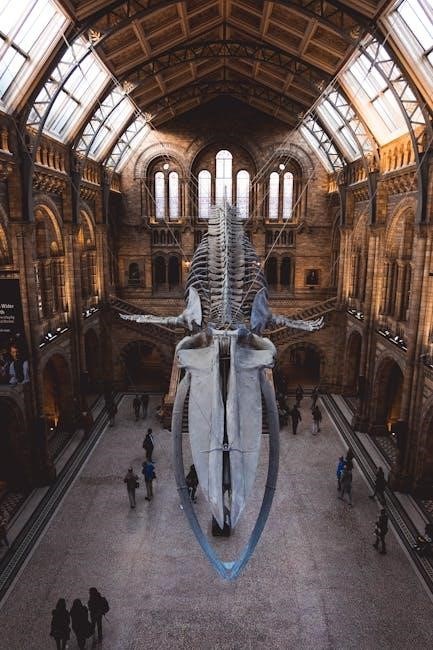
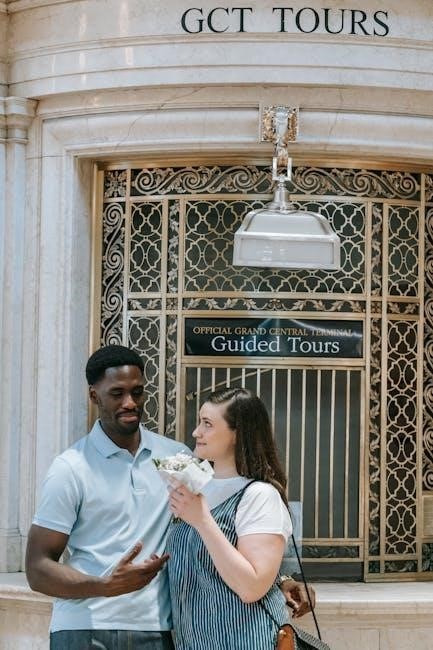
Accessibility Features
Accessibility features in self-guided museum tours ensure inclusivity for all visitors, including those with visual, auditory, or mobility impairments, through tools like audio descriptions, tactile elements, and physical accommodations.
Types of Accessibility Options
Self-guided museum tours incorporate various accessibility options to ensure inclusivity for all visitors. These include audio descriptions for visually impaired individuals, providing detailed narratives of exhibits; Text-to-speech functions and adjustable font sizes cater to those with reading difficulties. Tactile elements, such as Braille signage and 3D models, offer hands-on experiences for visitors with visual impairments. Wheelchair-accessible pathways and elevators ensure seamless navigation for individuals with mobility challenges. Additionally, multimedia tools like audio guides with multiple languages and visual cues enhance accessibility for diverse audiences. Clear and concise language in digital and printed materials aids comprehension for visitors with cognitive or linguistic barriers. These options collectively create a welcoming environment, enabling everyone to engage fully with the museum’s offerings.
Ensuring Inclusivity
Ensuring inclusivity in self-guided museum tours involves implementing tools and technologies that cater to diverse visitor needs. Audio descriptions and tactile elements, such as Braille signage and 3D models, provide equal access for visually impaired visitors. Mobile apps with real-time audio assistance and adjustable font sizes support those with hearing or visual challenges. Clear signage, wheelchair-accessible pathways, and elevators ensure mobility-impaired visitors can navigate effortlessly. Additionally, interactive maps with audio cues and multilingual audio guides accommodate linguistic diversity. These features collectively create a barrier-free environment, allowing all visitors to engage with exhibits meaningfully. By prioritizing inclusivity, museums ensure that cultural and historical experiences are accessible to everyone, fostering a sense of belonging and enriching the overall visit. This approach not only enhances visitor satisfaction but also aligns with the mission of museums to serve as inclusive cultural spaces.
Implementation Strategies
Effective implementation of self-guided museum tours requires a strategic approach to ensure accessibility and engagement. Museums should begin by training staff to assist visitors in using digital tools like audio guides and mobile apps. Conducting visitor testing and feedback sessions can help refine the user experience. Collaboration with accessibility experts ensures that features like audio descriptions and tactile elements are implemented correctly. Integrating digital tools, such as apps with real-time audio assistance, enhances the experience for diverse audiences. Regular updates to content and technology are essential to maintain relevance and functionality. Additionally, providing clear instructions and support materials, such as printed guides or video tutorials, helps visitors navigate independently. By prioritizing these strategies, museums can create a seamless and inclusive self-guided tour experience that caters to all visitors, regardless of their abilities or preferences. Continuous improvement based on visitor feedback ensures long-term success and satisfaction.
Technology in Self-Guided Tours
Technology enhances self-guided tours through audio guides, mobile apps, and beacon technology, providing interactive and personalized experiences with real-time information and immersive engagement for visitors.
Audio Guides
Audio guides are a cornerstone of self-guided museum tours, offering pre-recorded commentary that provides detailed insights into exhibits. They allow visitors to explore at their own pace, pausing or replaying content as needed. Many audio guides now include additional features such as video commentary, interactive games, and narrative storytelling to enhance engagement. This technology not only educates but also entertains, creating a more immersive experience. Audio guides are particularly beneficial for accessibility, offering an alternative for those who prefer listening over reading. They are often available in multiple languages, catering to a diverse audience. By combining rich content delivery with user-friendly design, audio guides empower visitors to deepen their understanding of the museum’s collection. They remain a versatile and essential tool for self-guided tours, balancing flexibility with informative storytelling to enrich the overall museum experience.
Mobile Applications
Mobile applications have revolutionized self-guided museum tours by offering a dynamic and interactive experience. These apps provide visitors with interactive maps, detailed exhibit information, and multimedia content such as videos and audio narratives. They enable users to navigate the museum seamlessly, with real-time location tracking and personalized route suggestions. Many apps incorporate augmented reality (AR) features, allowing visitors to view virtual overlays on exhibits, bringing history and art to life. Additionally, mobile apps often include interactive games, quizzes, and social sharing options, enhancing engagement and fostering a sense of community. They also cater to diverse audiences by offering content in multiple languages and providing accessibility features like text-to-speech functionality. By putting the power of exploration in the palm of their hand, mobile apps create a more immersive, flexible, and enjoyable experience for museum visitors, making them an indispensable component of modern self-guided tours.

Beacon Technology
Beacon technology is a cutting-edge component of self-guided museum tours, enhancing visitor experiences through proximity-based interactions. Small Bluetooth Low Energy (BLE) devices, or beacons, are strategically placed throughout the museum to detect visitors’ smartphones or tablets. When a device enters a beacon’s range, it triggers the delivery of relevant content, such as exhibit descriptions, audio narratives, or videos, to the visitor’s mobile app. This technology enables real-time, location-specific engagement, allowing visitors to uncover deeper insights about artifacts as they explore. Beacons also assist with navigation, providing directional cues and personalized recommendations based on a visitor’s path. By seamlessly integrating with mobile apps, beacon technology creates a more immersive and interactive experience. It empowers visitors to engage with exhibits at their own pace while ensuring they don’t miss key attractions. This innovative tool not only enhances learning but also streamlines the self-guided tour process, making it more accessible and enjoyable for all visitors.
Self-guided museum tours have revolutionized the way visitors engage with cultural and historical exhibits, offering a personalized and immersive experience. By integrating interactive storytelling, multimedia elements, and advanced technologies like beacon systems, museums provide visitors with the tools to explore at their own pace. Effective navigation and accessibility features ensure that all visitors, regardless of abilities, can fully participate. These components work together to create a seamless and enriching experience, fostering deeper connections with the exhibits. As technology continues to evolve, self-guided tours will become even more dynamic, offering new ways to interact with and understand cultural heritage. Ultimately, this approach empowers visitors to take control of their learning journey, making museums more accessible and engaging for a diverse audience. The future of self-guided tours lies in innovation, ensuring that cultural exploration remains a vibrant and inclusive experience for all.
